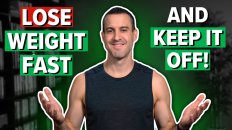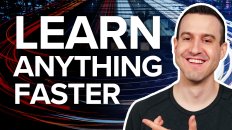There never seems to be enough time. Even after a seemingly productive day, where we accomplish many things, it can still feel like we’re constantly falling behind. So, let’s explore how six of the best productivity tips from 281 books can help.
Each of these tips addresses a unique aspect of productivity. Together, they can help us escape the endless rate race of life and take back control of our time and energy.
1. Productivity Is Measured By Results, Not Effort
It’s easy to fall into the trap of measuring productivity based on the time and effort we invest in our work. This can happen even if we understand that results are the only thing that matters. That’s because we can easily trick ourselves into believing that great results only occur when we invest significant time or energy.
With this in mind, one of the very first steps we must take to improve our productivity is to break this association. Time and effort are only loosely connected to creating results. This is a recurring theme in popular books, including The 4-Hour Work Week by Tim Ferriss, The One Thing by Gary Keller, and Who Not How by Dan Sullivan.
By way of example, let’s say you were being paid to unload 20 pallets of goods from a trailer into a nearby warehouse. You could (a) spend a day manually unpacking and unloading the goods by hand, (b) you could hire a dozen other laborers to help, or (c) you use a pallet jack to move the goods in 20-30 minutes.
The critical insight here is to get clear on the result we are aiming to achieve. That way, we can think more creatively about how to go about making it happen. For example, we can coordinate with others, use innovative technology, or in some cases, we might choose to stop engaging in activities that aren’t delivering worthwhile results.
2. Identify The One Thing That Provides Maximum Leverage
It’s easy to fall into the trap of trying to do it all. We slowly say “yes” to more and more until we’re caught in a sea of low-value activities. When this happens, we have less energy to focus on the few things that create the greatest return on our time.
To regain control, it’s helpful to identify the one thing that provides maximum leverage in your life, as explained in The One Thing by Gary Keller. It’s the one task, routine, or project that makes everything else much easier. It’s how we make our greatest contribution or, in some cases, how we prepare to make our greatest contribution.
For example, the most important thing an author can do is write. Other regular activities may include research, editing, attending speaking tours, or even booking flights to promotional events. Yet, writing is the step that creates maximum leverage. Nothing else matters if the work is subpar or if it doesn’t get done.
In many cases, our “one thing” is directly tied to career success. By performing better on that activity, we can increase our earning power. In turn, we can use that money to solve or prevent other challenges by hiring experts, outsourcing tasks, and investing in higher quality products and services that require less effort to maintain.
3. Take Back Control Of The Way You Use Technology
We are more distracted today than at any other time in history. Between mobile app notifications, email alerts, and social media updates, it’s becoming difficult to make productive use of our time. Meanwhile, tech companies are always looking for new ways to make their apps and services even more addictive.
If we aren’t intentional about using these tools, we can waste significant time on things that produce little value or lasting satisfaction. This is a recurring theme that is covered in many books, including Digital Minimalism by Cal Newport, Indistractable by Nir Eyal, and Make Time by Jake Knapp and John Zeratsky.
The solution is to be more intentional about how we use technology. Some practical steps include disabling non-urgent notifications on all devices, keeping smartphones out of arm’s reach during work hours, and enabling modern smartphone features to place time limits on the use of highly addictive apps.
For more extreme cases of digital addition, it’s worth considering what Cal Newport describes as a digital detox. This involves taking a 30-day break away from optional use of technologies like social media and video streaming. The goal is to break free of mindless habits and unlock time to get back in touch with more fulfilling pursuits.
4. Embrace Single-Tasking To Get Meaningful Work Done
Many people mistakenly believe they’re effective multi-taskers. They report feeling productive when juggling multiple tasks. However, studies show that engaging in two or more conscious activities dramatically reduces productivity and the quality of our work.
Our brains can only focus on one conscious activity at a time, as explained in Your Brain At Work by David Rock. As a result, we can only multitask when all but one of the tasks are embedded or nonconscious routines, such as driving a familiar route, going for a walk, or chewing gum.
What people often experience as multitasking involves either (a) rapid switching between conscious activities or (b) continuous partial attention between activities. In either case, you can expect a considerable drop-off in accuracy or performance. Worse still, such an approach can lead to constant and intense mental exhaustion.
The solution is to focus on only one conscious task at a time. Find ways to organize your work to channel your attention towards one task or group of highly related tasks at a time. This will immediately boost your productivity and allow you to focus for more extended periods of time.
5. Make Intentional Use Of Your Limited Mental Energy
There are three things to keep in mind when managing our mental energy. First, our best thinking is a limited resource that gets depleted over time. Second, certain tasks require considerably more mental energy than others. And third, not all high-energy tasks are equal in terms of their value or importance.
With this in mind, we must identify and prioritize tasks based on the value they produce and the amount of conscious effort they require. That way, we can organize our day around making the most of our highest-quality thinking.
Some examples of high-energy tasks include prioritizing upcoming work, responding to emails, or doing creative writing. Unfortunately, focusing on any one of these activities can limit our ability to take on the remaining options. Yet, a common mistake people make is jumping straight into email first thing in the morning.
While responding to email can be important, it’s one of the fastest ways to burn the mental energy you need for more critical work. A better approach is to begin each day by jumping straight into your “one thing,” as discussed in tip #2. If you don’t have a clear action to take, focus your mental energy on reviewing and prioritizing tasks.
Once you’ve made progress on your most valuable work, you can take a brief break and then tackle email or other high-energy tasks. Another great option is to schedule conscious work to take place after a small snack or light lunch. Just keep in mind that our best thinking takes place early, so get your most important work done first.
To learn more about this and many other ways to improve your productivity, I recommend that you read Your Brain At Work by David Rock.
6. Build Strong Habits Instead Of Relying On Willpower
One of the best ways to boost productivity is to turn valuable activities into automatic habits. In doing so, we eliminate the need for daily motivation, inspiration, or willpower. Instead, we simply maintain our routine and produce consistent results over time. In short, habits allow us to make a single choice that automates future choices.
So, once you’ve identified your “one thing” from tip #2, establish a relevant habit. For example, if you want to write a book, establish a daily writing routine for a set period each day. Of course, you won’t always feel like writing, but by establishing a daily habit, you’ll make far more progress than if you waited for inspiration to strike.
As Atomic Habits author James Clear explains,
“You do not rise to the level of your goals. You fall to the level of your systems.”
James Clear
Without strong habits, distractions and random tasks can quickly take over, especially when willpower is low. So, when motivation strikes, use it to establish a daily routine for producing ongoing results.
I recommend building your most important habits into the first few hours of the day. That is when you have the most mental energy to focus single-mindedly on critical work. So, once you get clear on your “one thing,” carve out time to make it a priority.
For practical tips and advice on establishing new habits, I recommend that you read Atomic Habits by James Clear.
Beyond The Best Productivity Tips
This list focused on the best productivity tips and tricks. However, you may also be interested in the best marketing tips, best startup tips, or other valuable insights from the 281 books that inspired this list. If so, take a moment to browse RickKettner.com.
To avoid missing out on future content, I encourage you to subscribe to the Rick Kettner YouTube channel or follow the Rick Kettner podcast.
Do You Have A Question Or Comment?
Please visit the best productivity tips video on YouTube to share your thoughts in the comment section.


